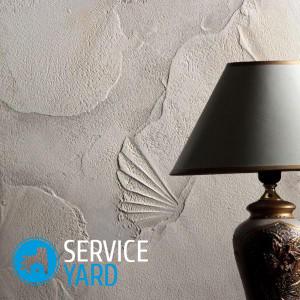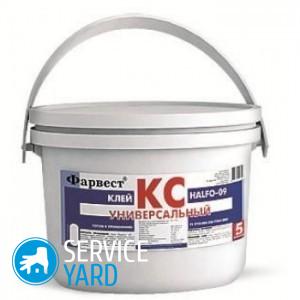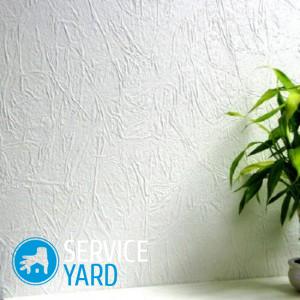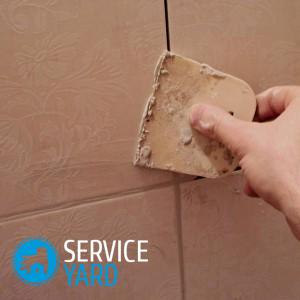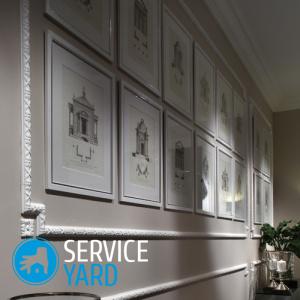Wallpaper at the junction - how to fix it?
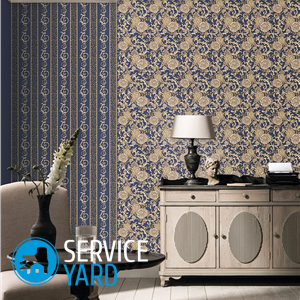
Many decide to make repairs on their own, because it is much cheaper, albeit longer. Problems with wallpapering usually do not arise if you already have such an experience. If it is not there and the wallpaper is pasted on the walls with violations of technology, then all the flaws become visible. The joints look especially ugly. So, if the wallpaper is at the junction, how to fix the situation? Strictly speaking, that ugly joints may appear, or “seams”, as they are commonly called, you need to think at the stage of buying finishing material. We will talk about all these nuances in this article.
to contents ↑Important! The first thing to decide is the type of wallpaper. Indeed, it is no secret to anyone that the rules for sticking them have their own characteristics, the non-observance of which leads to great disappointment with the work done. Read more about the rules for wallpapering in our flocks:
Why do joints appear?
This problem, in most cases, is typical for low-quality inexpensive materials. But sometimes they appear even when using expensive non-woven finishes.
Important! If you have no experience with sticking, you can use this trick. If you buy the material in a longitudinal strip or in a cage, the joints are easy to hide, even if they are.
It is much more difficult with vinyl, glossy, textured, thin or plain panels. The seam is usually noticeable.
In order to make the joints of the panels invisible, use a special sealant. But this measure is relevant if the wallpaper needs to be painted. As an option - you can paint the sealant itself to the color of the main canvas.
Important! The reason that joints become noticeable is the incorrect storage and transportation of rolls. When purchasing material, carefully inspect the ends. If the ends are damaged or wrinkled, then the seams immediately appear. If you removed the packaging from the rolls, store them in a standing position.
It happens that the end of the trellis of a dark shade is not painted. To avoid ugly stripes, paint these areas with a pencil that matches the color.
However, the appearance of joints is a typical problem for inexpensive paper products. This is due to the fact that the paper-impregnated paper panel stretches, and when moisture evaporates, it decreases in size. That is why when sticking paper trellis it is important to mount them immediately after spreading with glue, without waiting until the panels swell. If you neglect this, the risk of deformation and tearing is very high.
to contents ↑Wall preparation
To avoid deformation of wallpaper paintings and to achieve their perfect docking, you need to seriously approach the preliminary preparation of the walls. Puttying, sanding, priming - the necessary points. If you do not apply a primer, under the wallpaper there will be a large amount of dust, which simply absorbs part of the glue. Naturally, the material will stay on the wall much worse.
to contents ↑Important! It is advisable to ground the walls about a day before gluing, so that the soil has time to completely dry. The main thing here is to choose the right material, the material of our site will help you in this:"Which primer is best for wallpaper walls."
Correct glue application
Mistakes made when applying wallpaper glue - another problem associated with the joints. Moreover, there is a risk with both insufficient and excessive application of glue to the canvas. It takes a lot of time for the thick adhesive base to dry. The paper on top is already dry, and the glue under the sheet is still wet. All this will sooner or later lead to deformation.
Important! If you decide to wallpaper your house, then the question of finding high-quality glue is paramount, just like the rules for its use, learn more about these subtleties from our blogs:
After the adhesive is applied to the canvas, fold it and roll it with a rubber roller. This contributes to an even distribution of the composition over the surface. After the wallpaper is mounted, roll a seam area with a rubber roller. This action contributes to better fixation of the canvas.
to contents ↑Important! If the material is made glossy or using the silk-screen printing technique, it is almost impossible to hide the joints. The same goes for vinyl wallpaper. Therefore, when buying, focus on wide canvases, and try to hide the joints at the interior.
The joints on the wallpaper are visible - what should I do?
There are several options for the divergence of panels in the seam area:
- The joints diverge so that a wall is visible between them.
- The glue sticks out and stains the wallpaper at the joints.
- The edges of the panels are lifted and wrapped.
- Unevenly colored joints.
Each of these problems is corrected in its own way. All methods vary in degree of cost and labor. Before correcting flaws and thinking what to do if the seams on the wallpaper are visible, analyze what their cause is.
Important! Fix the edges of the canvas with special glue, which allows you to securely hold the edges of the paintings on the wall. When sticking wallpaper, do not forget to pass the roller in the joints.
How to remove the seams on the wallpaper after gluing? What to do if ugly joints have already formed?
- An effective but costly method - wallpaper coloring.
- There is another - relatively economical, but time-consuming, using grout for ceramic tiles. Add color to the grout to create a mixture of the color of the walls, and apply to the joints.
- You can paint over them with pencils, markers or felt-tip pens.
What to do if the wallpaper is divided at the joints?
- You can putty the joints with wallpaper chips from the upper part of the trellis mixed with glue.
- A good option is the use of special panels or moldings. You not only forget about the problem of joints, but also improve the appearance of the interior. The design looks originally curbs or piping.
- The most radical way is to try to glue the wallpaper at the junction of the panels. Moisten the joints gently with warm water. Then carefully glue them with glue, stretch and reconnect. If the error is small, then you can eliminate it quite easily.
Important! One cannot fail to mention one more problem: dried glue on the surface of the wallpaper. It is transparent, but quite visible in sunlight. To prevent this from happening, you need to apply the composition to the canvas strictly in accordance with the instructions. It is impossible to remove the dried glue, but in the process of gluing it is possible to remove it with a clean soft cloth.
If the trellises at the joints are peeled off and twisted, it looks very ugly. The most common reason is poor-quality finishing material. To avoid this, roll the joints at the glue roll.
to contents ↑Features of the installation of vinyl wallpaper
Vinyl wallpapers look very beautiful on the wall, they are easy to care for and durable. However, mounting thick panels in the corners often causes problems. Proper wall preparation, especially the perfect alignment of corners, is already half the solution to the problem. When decorating corners with vinyl wallpaper, use this installation technology:
- Stick cloths on both sides with an overlap of 3 cm.
- Next, cut this place. It turns out 2 canvases joined end-to-end.
to contents ↑Important! The only drawback of this method is that if the wallpaper is patterned, it is far from always ideal to reduce the pattern.
Useful Tips
To not get joints:
- It is necessary to glue vinyl wallpaper with a slight overlap.
- If the base is non-woven, the overlap is 20 mm.
- For a paper basis - 40 mm.
Important! After the gluing work is over, carefully inspect the walls for any air bubbles, joints. If necessary and whenever possible, all flaws must be corrected.
Consider also such recommendations:
- When using panels with a non-woven backing, glue is applied to the wall.
- If the base is paper, then the wallpaper is smeared with adhesive.
Important! But, just pasting the room with wallpaper is not enough, you need to finish decorating the interior:
To avoid errors, do not be too lazy to read the instructions or consult with the seller before buying.
to contents ↑Stock footage
In principle, no one is safe from defects after wallpapering, even if the skills to do this work are perfected ideally. Many factors can provoke a problem when the wallpaper at the junction is dispersed. In any case, now you know how to fix it.







